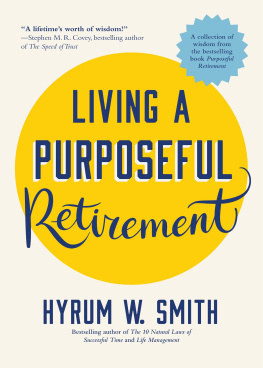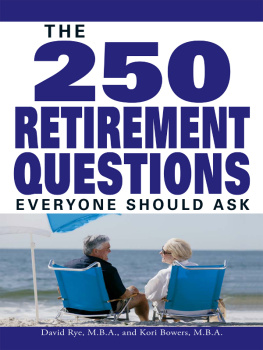PRICES IN MEXICO
The first edition of Choose Mexico, published in 1985, bore the subtitle Retire on $400 a Month. Even in those days, two decades ago, that wasnt a lot of money, although the dollar went further in the United States and Canada than it does today. Our assertion that it was possible for a couple, living somewhat frugally, to be comfortable in Mexico on a $400 budget was based on personal observations, numerous interviews, and responses to a questionnaire from retired North Americans all over Mexico. It was realistic at that time. But even then we knew that things could change and cautioned readers to check the books copyright date and get a newer edition if it was more than a couple of years old.
Things did change. Within three years we had to up that minimum figure by 50 percent, and a couple of years later it had doubled. It has been a long time since we stated our estimate of what it costs to live comfortably in Mexico, partly because change was so rapid and partly because we realized that our readers have greatly varying ideas about what constitutes a comfortable lifestyle.
Finally, we think we have arrived at a way of stating the situation in terms understandable to people at all income levels: If you can afford to live well in the United States or Canada, you can afford to live better in Mexico. And if you cannot quite make it on your income, you might well be able to in Mexico. This is true because your expenses in Mexico will be at least a quarter and perhaps a third less than at home. (You will need to show a minimum income to qualify for residency, which is explained later in the book.)
How much income is needed to maintain a particular lifestyle varies widely between individuals. Weve had retirees claim that they do okay on $800-a-month budgets (one man reported living on $400, but he said he admitted he could not recommend it for everyone). Other expats claim a $1,000 minimum is needed, while still others do not believe it can be done on less than $2,000. From our interviews with expatriates living in Mexico, the consensus seems to be that $1,200 to $1,600 is a viable range for a couple with a lifestyle at least as high-quality as they led before they made the move to Mexico. A couple we know well tells us they are living comfortably, but without frills, on their income from Social Security. One thing we recommend against is relocating to Mexico if you have little or no funds for those emergencies that are sure to occur. Youll not find any safety net in Mexicono welfare, no food stamps, and you cannot expect much assistance from the North American community. Thats one reason the government insists on your proving a minimum income before granting permission to immigrate.
MANAGING YOUR FINANCES
Managing your finances in Mexico has become much easier than even a decade ago, but it still requires more work than it did in your hometown. Certainly the Internet has been a tremendous help in keeping in touch with your stockbroker and managing your online banking accounts. If you keep the bulk of your savings and investments in the United States or Canada, as we have always urged our readers to do, you can send instructions to buy or sell securities by Internet or telephone just as quickly as you could back home. If you have residency papers, you can open a Mexican bank account and move funds into your local account from various banks in the United States that maintain relationships with Mexican banks. For example, Banamex in Mexico and Citibank in the United States allow easy transfer of funds by telephone or via the Internet.
Both visitors and residents rely largely on ATMs (which are available almost everywhere) to obtain cash. As a result, travelers checks are becoming a thing of the past. Be advised, however, that some banks impose significant fees for foreign transactions, and you will need to do a little research to find out if this is the case with your bank in the United States or Canada. You are also likely to be charged 7 pesos per transaction by the bank whose ATM you use, unless you have an account there.
INFLATION AND DEVALUATION
Readers of Choose Mexico have always been urged to leave most of their assets at home and in Mexico keep a minimum of pesos in a checking account, just enough to pay current bills. The balance of funds in Mexico should be deposited in a dollar savings account. When the peso checking account runs low, simply transfer dollars as needed. Mexican pesos are continually in a state of flux, gaining or losing value against the dollar on a daily basis. For the past decade the change has been almost miniscule, with the exchange rate varying a few cents one way or another. But there have been times when the pesos value dropped dramatically. When a peso devaluation happens, those people holding dollars find that their money buys more, and those with pesos lose out.
Its been more than twenty years since the last disastrous peso devaluation. A decade agoafter another, less serious devaluationthe Mexican government decided to stabilize the currency by allowing it to float daily to reflect the true value of the peso against world currencies. The authors of this book believe the government is on the right track and that future peso burnouts are highly unlikely. But we recommend keeping most of your Mexico funds in dollars, just in case. We do not want to leave you with the impression that Mexican banks are unsafe. The government insures that a bank cannot go out of business, and we havent heard of anyone losing a single peso in many years.
Inflation in Mexico has been remarkably low over the past ten years or so, not too much higher than in the United States or Canada. The good news is that when inflation gets out of balance, the government adjusts the value of the peso against the dollar, so there isnt much effect for those holding dollars. As peso prices rise, so does the number of pesos you get for your dollar. For the past several years, the peso-dollar exchange rate has been fairly steady, with the dollar valued around 11 pesos at time of publication.
COST OF LIVING
In this section we present current (as of the date of writing) prices for many goods and services throughout Mexico. They are based on the reports of residents and our visits to supermarkets, outdoor markets, bigbox stores, and corner tiendas (shops). We are hopeful that this information will be helpful to anyone who is considering moving to Mexico and needs to know whether it is within his or her means. The next step in making a decision continues to be those all-important exploratory trips to see whether you like what you can afford.
HOUSING The biggest item in your budget, wherever you live, is likely to be housing. As in the United States, no other cost varies as widely. Our advice, and we know of no informed writer on Mexico who disagrees, is to rent for some time before even starting to look for a place to buy. Its impossible to give a ballpark figure for rentals in Mexico any more than for the United States. As real estate people are prone to say, The rent you pay depends on three factors: location, location, location. Weve seen advertisements for houses for rent as low as $250 a month, and we are confident that for most Mexicans and some expatriates, $150 a month would be the limit. We also know of homeowners in popular places such as San Miguel de Allende who can get $250 a day for their places! Yet we have visited very comfortable apartments there renting for $500 a month. Remember, you get what you pay for. A $150-a-month house is likely to be a place few readers would choose; many would consider even a $300 rental rather basic. Our take is that in a nice area of Ajijic, for example, $600 to $800 are common rents. In more ordinary neighborhoods, half that amount would not be unusual.











